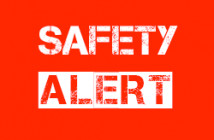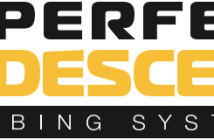You get a call on your radio:
“We have an injury on platform six.”
That’s strange, you think. That’s the back of the park, and we’ve been closed for 20 minutes. Nobody should be back there.
You arrive at platform six to see Mark, one of your most experienced and popular guides, sitting against a tree holding his ankle.
There were approximately 2.8 million non-fatal workplace injuries in 2014, according to the U.S. Bureau of Labor Statistics. About half of those involved time away from work. Digging deeper into the data, Labor reports that there were more than 100 workplace injuries per 10,000 employees in the Amusement & Theme Park industry. Reported injuries involved slips, falls, being struck by an object, or coming into contact with an object or equipment.
Fortunately, the national workplace injury trend is on its way down. But as the adventure park industry grows, the number of cases will only continue to rise. That puts your park and the whole industry at risk for additional regulation, cost, negative publicity, and ultimately loss of revenue.
That is, unless we create a culture of safety.
Culture can be a vague term, but generally it can be understood as the default set of behaviors in an organization. For example, if people generally come up with and share ideas freely, you could say that they have a culture of innovation, or a culture of speaking up. If people generally hoard information or talk behind each others’ backs, you might have a culture of fear or a culture of reprisal. So, what are the behaviors that make up a culture of safety, and how to you encourage them?
The hallmarks of a safety culture are:
- Personal responsibility. Everyone feels that safety is part of their job, and it’s apparent every day that they take it seriously.
- Courage. Safety supersedes roles to the point where a frontline employee can tell the CEO to put on a helmet without fear or repercussion.
- Taking ownership of safety. People look outside their slice of the organization to point out safety concerns, such as a guide noticing a tripping hazard in the kitchen.
- Camaraderie. Employees look out for each other and prevent each other from engaging in unsafe or risky behaviors.
To create a culture of safety, you need a combination of attitudes, policies, and practices that align in a way to encourage the right behaviors. The U.S. Department of Labor has a great article on this. It makes a number of great suggestions, among them:
- Create alignment and buy-in at the top. The senior-most leaders need to see the business benefit of focusing on safety, and need to be equally committed to supporting the culture.
- Build Trust. Ensure that speaking up for safety will be encouraged, not punished. Create an atmosphere of openness and candor. Leaders need to model this consistently over time so that employees feel safe enough to follow suit.
- Develop the right incentives. More than simply rewarding folks for “not hurting themselves,” ensure that you are measuring, reporting, and learning from data you are collecting. Empower employees to design ways to acknowledge milestones and hitting safety targets.
- Create an accountability system. Be sure there is one set of rules, and everyone follows them equally. Empower folks to hold others accountable regardless of their position in the company.
- Empower others. Create a safety committee comprised of employees from across the organization. This will ensure that safety becomes part of the regular conversation. It will also create greater trust and better ideas for implementing a safety culture.
- Invest in training. Everyone needs to know how to be safe and what safety means in the context of the adventure park. They should know what safe/unsafe behavior is in roles other than their own, and they need re-training periodically to ensure it stays top-of-mind.
Anyone can get injured, no matter how experienced and capable. As you know from other articles in API, the world is watching this industry closely. We must all take the necessary steps to establish a culture of safety for our employees and guests alike.





